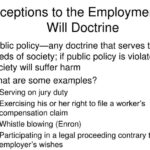Dealing with a painful tooth can be a daunting experience, leaving many people wondering about the cost of root canal treatment without insurance. While the price tag may seem daunting, the consequences of neglecting an infected tooth can be far more costly – both for your oral health and your overall wellbeing.
In this comprehensive guide, we’ll explore the average cost of this procedure, the factors that influence pricing, and how you can manage the financial aspect to get the care you need. By the end, you’ll have a clearer understanding of what to expect and how to make an informed decision.
What is a Root Canal?
It is a common dental procedure where the infected or inflamed pulp (soft inner tissue) inside a tooth is removed. This is necessary when the pulp becomes damaged, usually due to deep decay, repeated dental procedures, or a crack or chip in the tooth. During the root canal, the dentist clears out the damaged pulp, disinfects the inner tooth, and then seals it to prevent further infection.
Neglecting to get a necessary root canal can lead to serious consequences. The infection can spread, causing more severe pain, swelling, and even bone loss around the tooth’s roots. In the worst cases, the infection can spread to other parts of the body, potentially becoming life-threatening. That’s why it’s crucial to address a problematic tooth promptly, rather than putting off treatment due to concerns about the cost.
Signs You May Need a Root Canal

Only a dentist can definitively determine if a tooth’s canal is necessary, but there are several common signs that may indicate the need for treatment:
- Persistent pain or sensitivity in a specific tooth, especially when biting down or exposed to hot or cold temperatures
- Swollen, red, or tender gums around a particular tooth
- Visible discoloration, chipping, or a hole in the affected tooth
- A pimple-like bump on the gums near the problematic tooth
- Facial swelling
Read This Blog: Who Pays Health Insurance While on Long-Term Disability?
Factors that Affect Root Canal Cost
Several factors can influence the cost of this procedure, regardless of whether you have insurance coverage.
Tooth Location
The location of the affected tooth plays a significant role in the overall cost. Front teeth, such as incisors and canines, are typically easier to access and have fewer roots, making the procedure less complex.
As a result, root canals on these teeth tend to cost between $700 and $1,200 without insurance. On the other hand, molars, with their larger and more intricate root structures, are more challenging to treat, resulting in a higher price range of $1,000 to $2,000.
Provider Type
Whether the root canal is performed by a general dentist or a specialized endodontist can also impact the cost. Endodontists, who are experts in tooth’s canal treatments, may charge more for their specialized expertise, but they also have a higher success rate and can handle more complex cases.
Geographic Location
The cost of a root canal can vary significantly based on the geographic location of the dental practice. Prices tend to be higher in urban areas compared to rural or suburban regions.
Dental Insurance Coverage

If you have dental insurance, the coverage can greatly affect your out-of-pocket costs for a root canal. Many plans cover 50-80% of the procedure’s cost, but the exact percentage depends on your specific plan’s terms, including deductibles and annual maximums.
Additional Procedures
The need for additional procedures, such as a dental crown to protect the treated tooth, can further increase the overall cost of the root canal treatment.
Also Read: The Complete Guide to Wdroyo Insurance TCNEVS: Everything You Need to Know in 2024
The Average Cost of a Root Canal Without Insurance
Without dental insurance, its average cost can range from $1,000 to $2,000 per tooth. This price range is a general estimate, and the actual cost can be higher or lower depending on the factors mentioned above.
For example, a straightforward root canal on a front tooth may cost around $1,000, while a more complex procedure on a molar could be as high as $2,000 or more.
Financing Options for Root Canals Without Insurance
Many dental practices understand the financial burden that can come with unexpected dental work and offer various financing options to help patients manage the cost of a root canal without insurance. These may include:
- Payment plans that allow the patient to spread the cost over several months
- Third-party financing through companies like CareCredit, which offer low-interest or interest-free loans for qualifying medical and dental expenses
By exploring these financing options, patients can receive the necessary root canal treatment without worrying about the full cost upfront.
Why the Cost of a Root Canal is Worth It
While its cost without insurance may seem high, it is often a necessary investment in maintaining your oral health and preventing more severe and costly problems down the line. Ignoring a root canal can lead to the following consequences:
- Spread of infection to other teeth, gums, and potentially the bloodstream, which can result in more complex and expensive treatments
- Worsening of the original problem, potentially leading to the need for a tooth extraction and replacement with a dental implant or bridge
- Increased risk of serious health complications, such as abscesses or the spread of infection to the brain or other vital organs
Ultimately, the cost of a root canal is far less than the long-term consequences of neglecting the problem. By addressing the issue promptly, patients can preserve their natural teeth, maintain their oral health, and avoid more extensive and costly procedures in the future.
FAQ
How can I save money on a root canal without insurance?
Explore payment plans and financing options offered by your dental practice, as well as third-party healthcare credit cards, to help manage the cost without insurance.
What is the average cost of a root canal in my area?
The average cost of a root canal can vary significantly based on your geographic location, so it’s best to consult with a local dentist to get a more accurate estimate for your specific area.
How do I know if I need a root canal?
Persistent pain, swollen gums, tooth discoloration, and visible damage to the tooth are all common signs that you may require a root canal. If you experience any of these symptoms, it’s important to schedule an appointment with your dentist as soon as possible.
Conclusion
Dealing with a painful, infected tooth can be a stressful experience, but the cost of a root canal shouldn’t deter you from seeking the necessary treatment. By understanding the factors that influence the price and exploring available financing options, you can make an informed decision about your oral health and get the care you need.
Remember, the long-term benefits of preserving your natural teeth far outweigh the immediate cost of a root canal.







